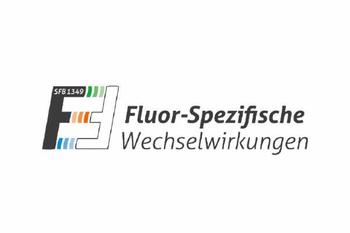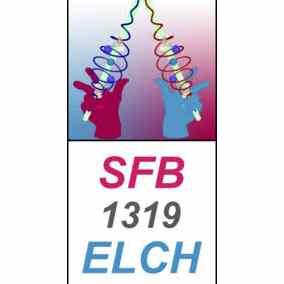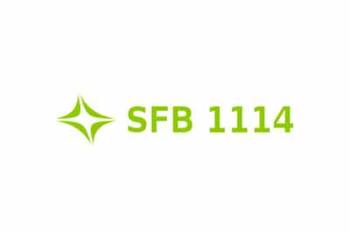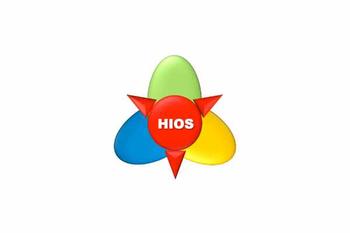Current
Physics research groups of FU Berlin contribute to various CRCs.
The overarching aim of this CRC is to understand the individual and combined contributions of the physicochemical key parameters to hydrogel (dys)function in health and disease.
Our key objective is the molecular definition of mucus (structure, properties and dynamics at the molecular level). Our chemical, physical, medical and modelling expertise will be applied to specific key questions: What is the role of the individual hydrogel components, i.e., mucins, proteins, salt and water, in the complex process of their network formation and function?
Spokesperson
Prof. Dr Rainer Haag, Department of Biology, Chemistry, Pharmacy
Involved groups
CRC 1449
The researchers want to understand and control the complex interactions that can arise from fluorinated building blocks in chemical systems. They want to discover how such interactions affect a wide range of physicochemical properties and chemical reactivities. These include the effects of fluorine-specific interactions on the properties of functional materials, their influence on various catalytic processes and the biochemical and pharmacological effects on a range of biological systems.
Funding
€ 9.1 m
Spokesperson
Prof. Dr Sebastian Hasenstab-Riedel, Freie Universität Berlin
Involved groups
Involved universities
- Freie Universität Berlin
- Humboldt University Berlin
- Technical University Berlin
- BAM - Bundesanstalt für Materialforschung und -prüfung
- University of Bayreuth
- University of Stuttgart
SFB 1349
This CRC focuses on the investigation of a microscopic quantum mechanical understanding of individual chiral molecules in the gas phase under perfectly defined experimental conditions. It employs the most advanced tools of experimental and theoretical gas phase atoms, molecular, and optical/quantum optical (AMO) physics for control and manipulation of chirality on the single-molecule level. With the help of extreme light, covering all relevant excitation regimes in terms of energy, intensity, and temporal resolution, it addresses the full chiral quantum system of electrons and nuclei in each individual molecule.
Coordinating university
University of Kassel
Involved group
CRC 1319
Modeling and simulation techniques for various predictions
The scientists from meteorology, geology, biochemistry, mathematics and physics develop modeling techniques that enable a controlled distribution of computational degrees of freedom across the scale cascade. They elaborate simulation techniques for the prediction of e.g. earthquakes or large amounts of precipitation.
Spokesperson
Prof. Rupert Klein, Freie Universität Berlin
Involved groups
CRC 1114
How does a distinct set of molecular switches control the spatio-temporal regulation of a diverse range of biological processes?
Biological signals are generated by molecular switches. These allow temporal and spatial coordination of a wide range of cellular processes. The overarching goal of our research consortium is to functionally analyze how a distinct set of molecular switches controls the spatio-temporal regulation of a diverse range of biological processes.
Intriguingly, in many cases, the molecular events that are downstream of the activation of a molecular switch trigger a cellular switch such as cell fate decisions between survival and apoptosis. To investigate the molecular mechanisms that link molecular switches to cellular switches in living cells, we use advanced chemical biology tools such as photoactivatable membrane lipids.
Coordinating university
University of Heidelberg
Vice-coordination
Freie Universität
Involved research group
CRC/TRR 186
How can we combine significantly different classes of materials in hybrid inorganic/organic systems (HIOS) so that we realize substantially improved and potentially novel optoelectronic functionalities?
In the first phase, scientists investigated and comprehensively understood the fundamental chemical, electronic and photonic interactions in inorganic/organic hybrid systems. They discovered novel hybridized quantum states and coupled excitations at HIOS interfaces. Besides, the fundamental limit of the modern inorganic bulk semiconductors used so far was identified.
Currently, researchers are working to exploit the extremely high surface-to-volume ratio and strong light-matter interaction of atomically thin monolayers of transition metal dichalcogenides. They aim to determine the fundamental interactions and optoelectronic properties of these heterostructures to achieve maximum coupling and functionality.
The research center focuses on how to control dissipative structures in nonlinear dynamical systems far from thermodynamic equilibrium. An interdisciplinary team of applied mathematicians, theoretical physicists, and computational neuroscientists goes beyond merely describing the intriguing dynamics of self-organizing nonlinear systems. They aim to develop novel theoretical approaches and methods of control, and to demonstrate how to apply these concepts to a selection of innovative self-organizing systems ranging from condensed hard and soft matter to biological systems.




